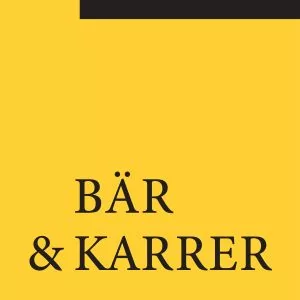On 21 September 2019, the Federal Council decided to implement several parts of the amendments adopted in the spring session 2016 regarding the legislation on therapeutic products and the law on patents as well as the corresponding ordinances on 1 January 2019. In order to complete the second stage of the ordinary revision of the legislation on therapeutic products, only the implementation of the provisions on integrity and transparency as well as the passing on of benefits is missing, which is expected to take place in the beginning of 2020.
Overview
On 18 March 2016, the Federal Assembly adopted the second stage of the ordinary revision of the Federal Act on Medicinal Products and Medical Devices (TPA). As a consequence, the corresponding ordinances had to be amended comprehensively (Therapeutic-Products-Ordinance-Package IV). The amendments concern ordinances both of the Federal Council and of the Institutional Board of the Swiss Agency for Therapeutic Products Swissmedic, namely
- the (fully revised) Ordinance on Medicinal Products (VAM),
- the Ordinance on Advertising of Medicinal Products (AWV),
- the (new) Ordinance on the Supervisory Fee for the Benefit of the Swiss Agency for Therapeutic Products,
- the Ordinance on Authorization of Medicinal Products (AMBV),
- the Ordinance on the Simplified Authorization of Medicinal Products and the Authorization of Medicinal Products in the Notification Procedure (VAZV),
- the (fully revised) Ordinance on Complementary and Herbal Medicinal Products (KPAV),
- the (fully revised) Ordinance of the Swiss Agency for Therapeutic Products on its Fees, as well as
- the (fully revised) Ordinance of the Swiss Agency for Therapeutic Products on its Personnel.
Based on the feedback from the consultation process regarding the Therapeutic-Products-Ordinance- Package IV, the draft ordinances were amended selectively.
With the decision of the Federal Council of 5 April 2017, several provisions of the revised TPA as well as the corresponding ordinances' provisions had already been implemented at the beginning of 2018, namely article 9 section 2 lit. f revTPA regarding the continuation of cantonal authorizations of medicines, as well as article 67a revTPA regarding the powers of the Federal Council to collect, harmonize, evaluate and publish data on the prescription, supply and use of medicines in pediatrics.
Furthermore, the revision entails amendments of the Federal Act on Patents for Inventions (PatA) and the Ordinance on Patents for Inventions (PatO) in order to promote medicines in pediatrics. The respective amendments will enter into force on 1 January 2019 as well.
Still pending is the implementation of the provisions on integrity and the obligation of transparency (namely articles 55 and 56 revTPA as well as the executive Ordinance on Integrity and Transparency in the Area of Therapeutic Products, VITH) as well as the provisions concerning the control of passing on benefits in the area of the mandatory health insurance (in particular article 56 section 3bis revTPA), which are expected to enter into force at the beginning of 2020 due to the necessary amendments on the ordinance level.
The Most Important Amendments Entering into Force on 1 January 2019
Facilitation of Market Access
In order to facilitate market access and to improve the availability of medicines for the population, article 14 section 1 lit. abis to aquater revTPA expand the possibility of the simplified authorization procedure to additional categories of medicines. The authorization of medicines with active ingredients that have has already been authorized in an EU- or EFTA-country ("well established use"), of medicines of long-standing use in another country ("traditional use") as well as of medicines with a pre-existing cantonal authorization will now follow the simplified procedure (cf. articles 17a et seq. revVAZV as well as section 1 of the annexes 4 to 5.3 to the revAMZV).
Prescription and Supply of Medicines
In the course of the revision of the rules on self-medication, the categories regarding dispensing will be restructured. While the fundamental division into medicines with or without prescription will be maintained, the former five categories will be reduced to four by dropping Category C (supply after consultation of a healthcare professional). Accordingly, in the future, articles 41 et seq. revVAM will provide for the following categorization:
- Category A: Singular supply upon medical or veterinary prescription
- Category B: Supply upon medical or veterinary prescription
- Category D: Supply following professional consultation
- Category E: Supply without professional consultation
The majority of medicines formerly belonging to Category C will be re-classified to Category D, with the exception of medicines which have to be assigned to Category B due to security reasons. Swissmedic is currently working on this, and the lists regarding the re-classification of all medicines of Category C are expected to be published in November 2018 as an advance information. The definite re-classification of the respective products will be made by way of ordinary administrative procedures following the implementation of the new legislation on medicines.
Furthermore, the revision aims at enhancing the exploitation of existing professional expertise when dispensing medicines by loosening the requirements for the supply of prescription medicines. Accordingly, pursuant to article 24 section 1 lit. a no. 1 revTPA, pharmacists may now generally dispense certain medicines of Category B without prescription. The respective medicines and indications as well as the documentation obligation are defined in article 45 et. seq. revVAM.
As a consequence the re-classification of many medicines of the former Category C to Category D, the dispensing competence of druggists will be expanded.
Additionally, article 52 revVAM defines the minimal requirements regarding the prescription of human medicines. The necessity of indicating the patient's address has been given up, and the requirements regarding the signing of the prescription have been modified in order to allow the electronic issuance without having to fulfill the strict conditions of a qualified electronic signature. However, article 51 section 1 revVAM only stipulates minimal requirements, and the cantons may demand further information such as the patient's contact details.
Security of Medicines
In order to improve the security of medicines, the legal bases of marketing authorization and market surveillance have been adapted to international developments. The key changes include the pediatric testing concept, the rules of good vigilance practice, the risk management plan as well as the expansion and specification of reporting obligations:
- In the course of the authorization of medicines, pursuant to article 11 section 2 lit. a no. 6 in connection with article 54a revTPA, a pediatric testing concept (PTC) has to be submitted which includes the pediatric population into the development of new medicines. An exception from this obligation is possible, if the medicine is used to treat diseases which only occur in adults. Additionally, a PTC already assessed by a foreign authority may be taken into account. The respective provisions are to be found in articles 5 and 84 revVAM in particular.
- In annex 3 of the revVAM, the recognized rules of the good vigilance practice are defined by referring to the guidelines of the International Conference on Harmonization (ICH), the European Medicines Agency (EMA) and the US Food and Drug Administration (FDA) regarding human medicines resp. the Veterinary International Conference on Harmonization (VICH) regarding veterinary medicines.
- The risk management plan shall include risk evaluations and a pharmacovigilance-plan, which shall provide for the systematic assessment and evaluation of risks connected to the use of a medicine as well as for the respective prevention measures (cf. article 11 section 2 lit. a no. 5 revTPA and article 4 revVAM).
- Finally, the reporting obligations regarding adverse effects and incidents in article 63 revVAM in connection with article 59 TPA has been expanded to professionals authorized to use or dispense medicines.
Improvement of Transparency
Whereas the provisions on transparency regarding discounts and remunerations will only be implemented later on, certain amendments aiming at improving transparency will enter into force on 1 January 2019. With regard to newly submitted applications for marketing authorizations, indication extensions or an expansion of a pre-existing marketing authorization, various details on the medicine and the holder/ applicant of the marketing authorization have to be published within 60 days. The same applies to (approved, and now also rejected) decisions on marketing authorization and withdrawals and to retractions of applications for authorization, indication extension or expansion of a pre-existing marketing authorization. Furthermore, the evaluation reports regarding human medicines with new active substances (Swiss Public Assessment Report, SwissPAR) on which the application is based as well as the reports on risk management plans have to be published. Additionally, for transparency reasons, the document protection period has to be published (cf. article 68 revVAM).
Furthermore, articles 77 et seq. revVAM as well as annex 5 of the revVAM stipulate that the holder of the marketing authorization of a human medicine is obliged to publish a summary of the relevant study results within three months after the marketing authorization has been granted, whereby a reference to internationally established public registers and databases of clinical studies shall be sufficient.
Strengthening of Research Incentives by Expanding Document Protection, and Extended Patent Protection for Pediatric Medicines
On 1 January 2019, the amendments regarding document protection stipulated in the medicinal product legislation as well as in the patent legislation will enter into force as well, aiming at creating new incentives regarding the development of medicines:
- In the future, documentation regarding indications of known substances may be protected for a period of ten years (and not only of five years as before) upon request, if, compared to existing therapies, an important clinical benefit may be expected, and if the indication is supported by extensive clinical tests (cf. article 11b section 2 revTPA).
- Regarding medicines intended especially or exclusively for pediatric use, Swissmedic allows for a document protection period of ten years, under the condition that no document protection has been granted for another medicine authorized by the agency with the same active substance for the same pediatric use (cf. article 11b section 3 revTPA).
- Document protection regarding medicines for treating rare diseases (Orphan Drugs) may now be granted for a 15 year period upon request (cf. article 11b section 4 revTPA).
- Anyone who contributes to the research and development of new medicines for children can now apply for a six-month extension of patent protection. The extension regarding pediatric medicines allowed under the revised PatA (cf. articles 140n to 140y revPatA) may consist of an extension of a pre-existing supplementary protection certificate or a new six-month pediatric protection certificate which is directly connected to the duration of the patent (cf. articles 127a to 127zbis revPatA). The requirements for the granting of the protection certificate are defined in the PatO.
The content of this article is intended to provide a general guide to the subject matter. Specialist advice should be sought about your specific circumstances.


